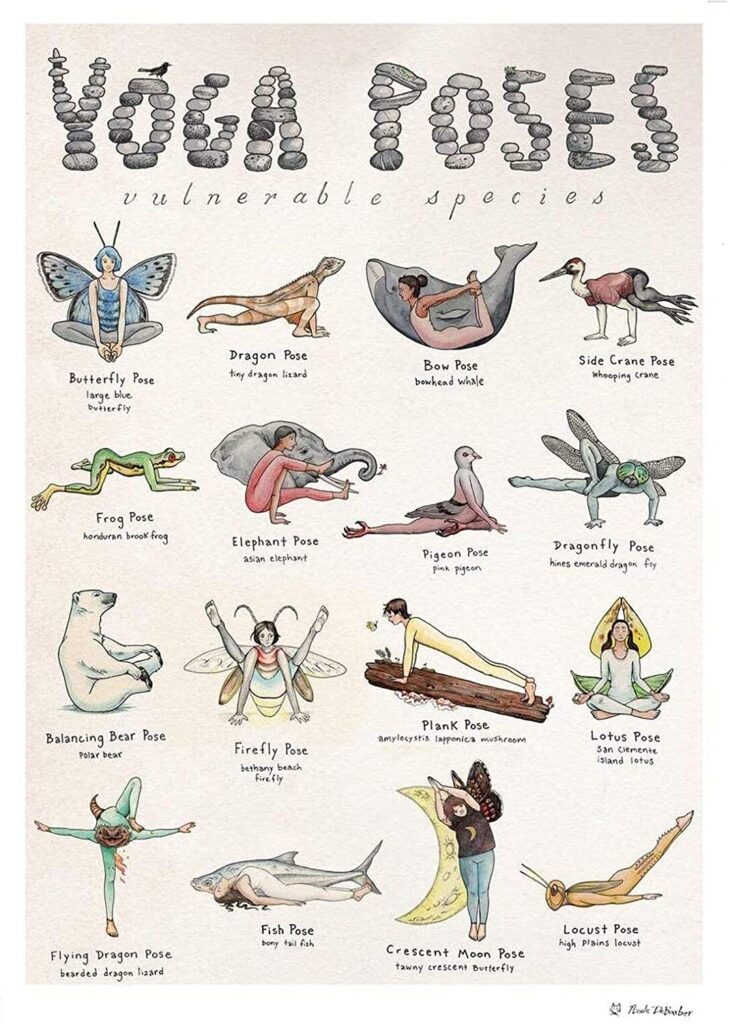Yoga, the path to wellbeing

International yoga day is celebrated on 21, June 2021. The significance of this year’s event is useful has never before. When considering the impact of the present pandemic, we notice a drastic downfall in people’s health and well- being globally. With the idea of promoting wellness, The United Nations has taken steps to recognize and promote yoga within its own staff members and other relevant organizations. Additionally, The World Health Organization and UNICEF too have extended their support in promoting yoga considering its effectiveness towards people’s well-being. Practicing yoga is not the solution to the pandemic, but it teaches individuals to maintain positive physical and mental health under any circumstances. Time has come to realize practicing yoga is certainly a ‘life changer’ to mankind.
Efforts from these organizations alone will not bring positive results on people’s wellness. It’s the duty and responsibility of every leader of a country to recognize, support, and encourage best practices of well-being for all citizens in every possible way.
In Sanskrit, Yoga means “Yuje” and Hinduism believed to have influenced the development of Yoga. From the earliest times to date, the most prominent and popular destination to experience yoga is believed to be the Indian continent. Building on such foundations – ancient and present scholars have come up with a number of terms and definitions to describe yoga which can be seen in many forms in a more contemporary context. For some it’s a science, a mystery, embracing nature, and for others, a gateway for one’s well-being and lifestyle. However, despite the categorization, it’s widely accepted and documented that practicing Yoga has produced positive results for millions of people.

The beginning of a long journey
Human behavior despite time and place has been closely in connection with nature, and early humans were capable of understanding the need of protecting its ample and invaluable resources. They quietly listened, watched, and felt the activities around them, being vigilant was important for survival. One particular area they focused was the movement of animal species. Knowledge gathered through such activities across a long span of time, made the early man notice certain postures and positions that made animals relax while sleeping or resting on different surfaces of their preferences.
These motionless and concentrated postures and subsequent calm behavior of animals created excitement and stimulated the early humans to ‘watch and learn’ further. They went on to make changes and adopted these postures to fit into their lifestyles. It will be interesting to explore further as to ‘how’ the earlier humans, with the support of animals and the environment, contributed to laying the foundation to modern-day Yoga.
‘Thus came the opportunity for the early humans to embrace a feeling of inner relaxation, a moment of happiness and calm, totally a different experience’.
Further they used their skills to illustrate and carve their findings and thoughts in caves, wood and stones for future generations. Least they knew some of these postures one day would assist mankind to embark on a physical and a spiritual journey of experiencing a calmer and tranquil state of mind.
Civilizations flourished under the reign of Kings. All societies in the area came under one rule and habits of different cultures and their practices must have inevitably been interesting topics of exploration. At some stage, information on these previously observed preliminary relaxation styles adopted by certain groups reached the walls of palaces.
Later with the help of the Brahmans, Rishi, and other noble’s, the development and documentation of the yoga practices – was looked into. Once it was adopted by the Royals it was prohibited to the commoner.
Though it’s hard to discover an exact timeline of its origin, Historians reveals Yoga practices started over 5,000 years ago, during the Indus – Sarasvati civilization in Northern India. “Yoga was mentioned in the form of rituals, mantras, and songs in the “Rigveda” the oldest known Sanskrit text. Evidence surfaces of a rishi in India known as “Pathanjali” documenting a book based on ancient traditional practices on Yoga between the period of BC 300 – BC 200. This book has highlighted the importance of balancing one’s body, soul, and mind to enhance mental, spiritual, and physical well-being.
‘Yoga is practiced and taught to achieve one’s physical, psychological and emotional wellbeing to support a better lifestyle’


Sri Lanka – Experience a ‘yoga awakening’
In Sri Lanka Yoga is practiced in many religious and non – religious institutions and attracts many learners, professionals, and amateurs. In keeping with ancient traditions and wisdom of Ayurveda, Indigenous medicine (‘Hela Wedakama’), meditation and yoga, Sri Lanka offers a wide range of wellness opportunities for the upliftment of one’s mental and physical relaxation. Many overseas visitors would make a ‘great escape’ from their busy schedules and prefer seeking relief from traditional methods.
With a ‘feel at home’ atmosphere, Sri Lanka offers a splendid opportunity to experience wellness in various environments within a short span of travel within the country. With the cool climate of the central region, sunny and breezy west coast, warmer beaches and shallow waters of the east coast and north-central parts with dense jungles, rivers and ancient ruins, it’s a kind of an ‘embracing yoga with nature’ type of experience. Blessings from nature continue as NASA and German scientist made a unique discovery of Sri Lanka as the lowest gravity point when comparison to the rest of the world. Yoga experts believe this geographic positioning may help people to achieve better mental relaxation and flexibility during yoga sessions.
‘During Yoga retreats Yoga and Yogini instructors will compassionately steer you beyond all boundaries to reach the heights of your physical and spiritual healing. You will be amazed to discover your own story at the end of each session.
Sri Lankan Tourism Development Authority offers figures of tourist arrivals for each year along with the purpose of visit. To obtain the latest information on the Tourism Industry/statistics in Sri Lanka please visit: https://www.sltda.gov.lk/en

Benefits of practicing yoga:
- Achieving happiness
- Helps relieve stress and anxiety
- Balances your hormones
- Smooth function of lungs
- Increase blood circulation and feeling energetic
- Help get rid of bad toxins and purifies the blood
- Managing better sleep
- Experiences a smooth digesting
- Better complexion
- Delays the aging process
To achieve maximum benefits of Yoga,
- People with serious ailments should refrain from practicing yoga
- Recommended to seek guidance from a professional yoga teacher
Few interesting facts on Yoga
- The yoga industry is worth more than $84 billion worldwide.
- Lack of flexibility is what holds 32% of non-yogis from trying yoga out.
- Aside from in-person classes, 24% of people also use yoga apps or yoga guided by videos to practice.
- A research conducted on 52 women with anxiety and depression has shown a decrease in symptoms after 12 Sessions of hatha yoga.
- 54% of yoga practitioners said that yoga helps them release tension.
- 94% of yoga practitioners say they do yoga for wellness-related reasons.
- 15 minutes of yoga practice every day changes the brain’s chemistry and boosts mood.
- Japan has had a 413% yoga growth rate in just five years.
- In Germany, only 10% of respondents claim they practice yoga regularly.
- Around 30% of the Dutch prefer meditation yoga or mindfulness.
- 59% of yoga practitioners in the US believe that yoga helps improve their sleep.
- More than 43% of yoga practitioners are between 30 and 49 years old.
- 72% of yoga practitioners are female.
Statistics Source – https://comparecamp.com/yoga-statistics/
For more information please visit – https://www.un.org/en/observances/yoga-day






